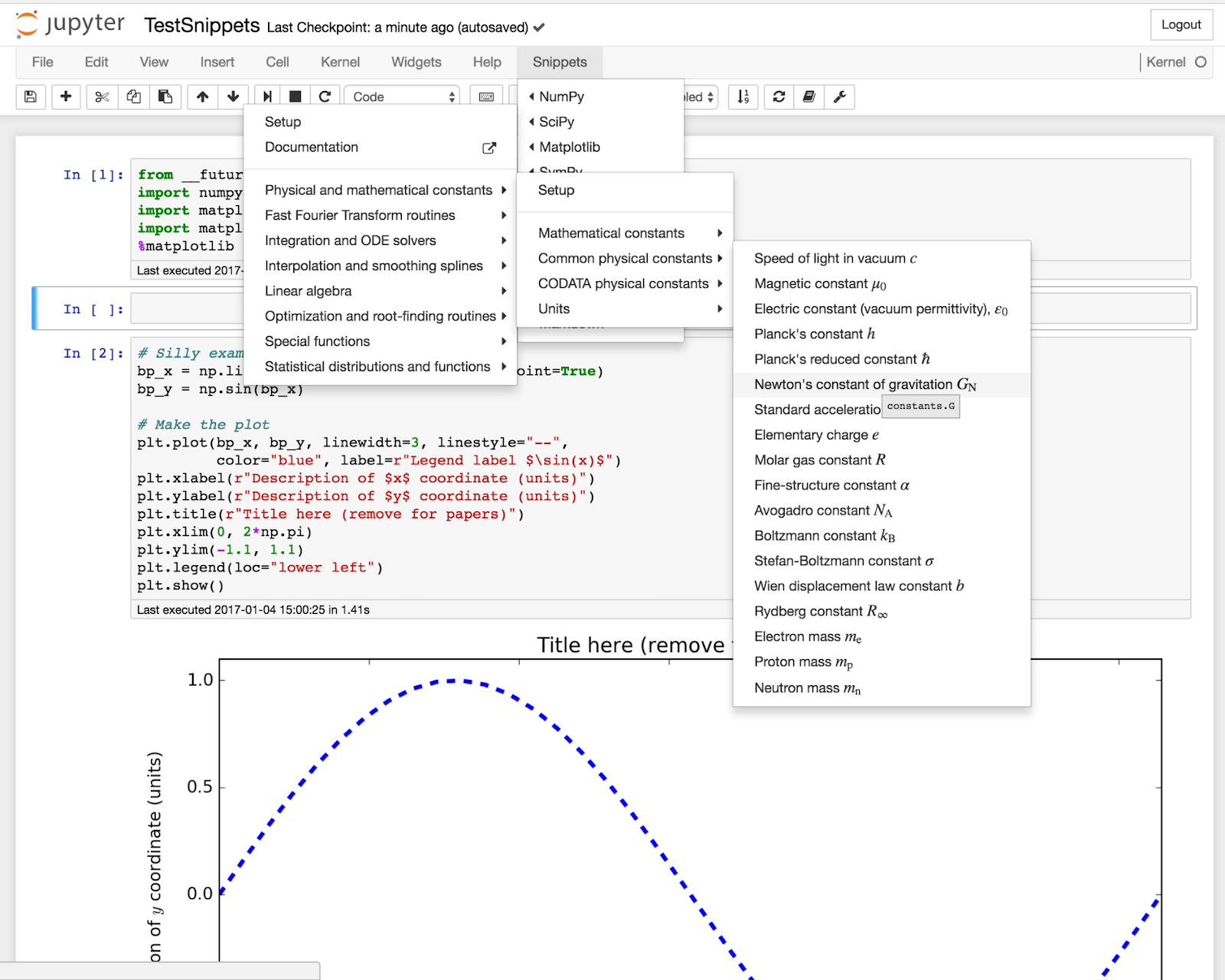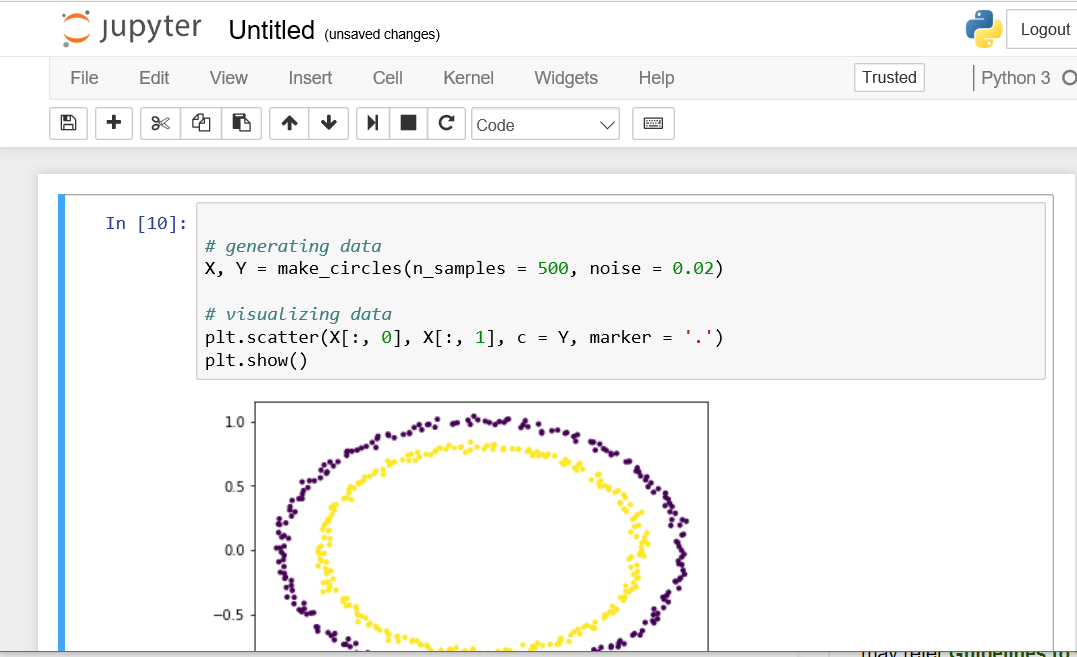

#Example of good python jupyter notebook install
This exercise is just to get started, for a thorough treatment see theįirst install ipyparallel using conda or pip. Run a set of tasks on a set of CPUs using dynamic load balancing.ĭevelop, test and debug new parallel algorithms (that may use MPI)Īnalyze and visualize large datasets (that could be remote and/or Quickly parallelize algorithms that are embarrassingly parallel using Possible use cases of ipyparallel include: Types of parallel applications to be developed, executed, debugged, and However, IPython now supports many different styles of parallelism whichĬan be useful to researchers. Like Fortran or C/C++ where OpenMP and MPI can be utilised. Traditionally, Python is considered to not support parallel programming veryĪnd “proper” parallel programming should be left to “heavy-duty” languages If the file is called cpp_ext.py, you can then To be able to use the magic in another notebook, you need to add theįollowing function at the end and then write the cell to a file in
#Example of good python jupyter notebook code
Write some C++ code into a cell and try executing it. The User Interface Tour and Keyboard Shortcuts are useful places to start, but there are also many other links to documentation there.

You can now start using the magic using %%cpp. Last revised: 1 by Dick Furnstahl You can find valuable documentation under the Jupyter notebook Help menu. format ( program_filename )) print ( ' \n '. from scipy import import pylab as py import random aa random.sample(arange(1,4,0.

write ( cell ) # We compile the C++ code into an executable. with open ( source_filename, 'w' ) as f : f. source_filename = '_temp.cpp' program_filename = '_temp' # We write the code to the C++ file. ip = get_ipython () # We define the source and executable filenames. The first notebook you are running will usually run on port 8888. When you run Jupyter Notebook, it runs on a specific port number. To do so, execute the following command: jupyter notebook A log of the activities of the Jupyter Notebook will be printed to the terminal. Def cpp ( line, cell ): """Compile, execute C++ code, and return the standard output.""" # We first retrieve the current IPython interpreter instance. With Jupyter Notebook installed, you can run it in your terminal.


 0 kommentar(er)
0 kommentar(er)
